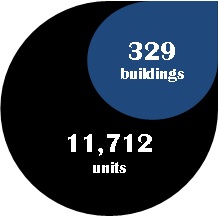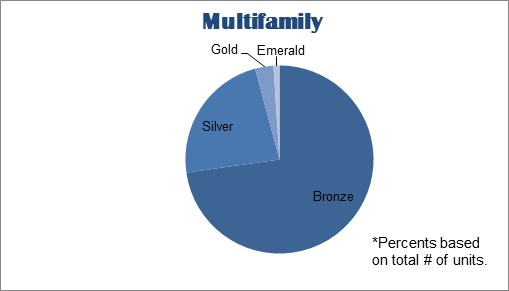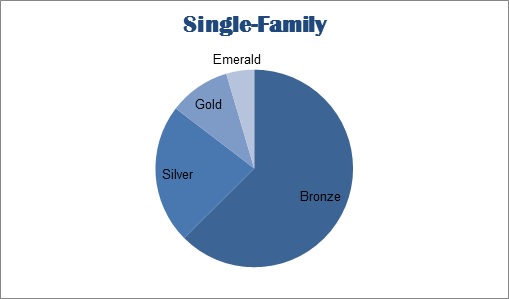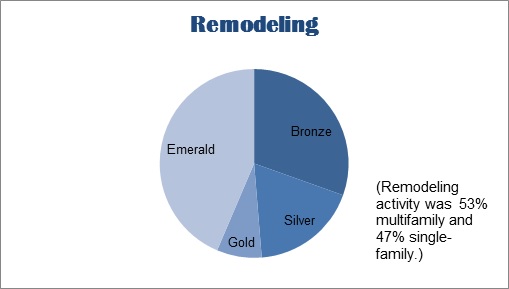

This past year was a big year for Home Innovation’s NGBS Green Building programs, both in terms of new developments/changes and program growth. If you haven't already, I'd encourage your to take a look back at Michelle Desiderio’s Green Building Odyssey post from last April that described numerous program developments from just the first quarter of 2013.
Here are a few notable certification trends we saw last year:
If you look at just home/building certifications, it would seem that green building activity diminished slightly in 2013. However, the real story lies in the unit (or home/apartment) count. The multifamily housing market was booming throughout 2013, and Home Innovation certified nearly twice the number of living units/apartments we did 2012.

Multifamily (new construction) certifications comprised about 15% of all our green home/building certifications, but nearly 82% of our total unit count.

There are a few reasons why I believe multifamily developers are leading the industry in green certified homes.
While the multifamily sector has experienced the greatest volume of certification, single-family homes and renovation/remodels are more likely to achieve higher levels (Silver, Gold, Emerald).
Multifamily developers assess the value of green certification in terms of ROI. Developers select a green certification level and practices based on the local construction code (incentives or mandates for green development) and the expected savings from energy and water efficiency. Many are comfortable building to the Bronze level (which is still a notably rigorous mark!).

There are a number of single-family homebuyers who are willing to spend more to achieve higher levels of green. In particular, custom homebuilders have certified a number of highly-efficient green homes with unique features that were integrated based on client needs. Check out these examples from Treasure Homes, Inc., and Caldwell & Johnson.

Older homes are notoriously inefficient. Remodels/renovations to achieve significant energy and water efficiency gains are usually much easier than attaining the same efficiencies with new building codes.

North Carolina continues to lead the nation in terms of volume, as green building activity is strong throughout the Triangle and Charlotte metro areas. There are several reasons for the high-volume activity in the state.

Given the total number of NGBS Green Registered units in process, Home Innovation is positioned to more than double the number of certifications we will issue in 2014 and 2015. We believe that builders have recognized NGBS Green certification offers an affordable, streamlined, and yet rigorous path to independent, third-party green certification.

So what green home building trends did you see over the last year? What are you predicting for the coming year? Let me know.
***